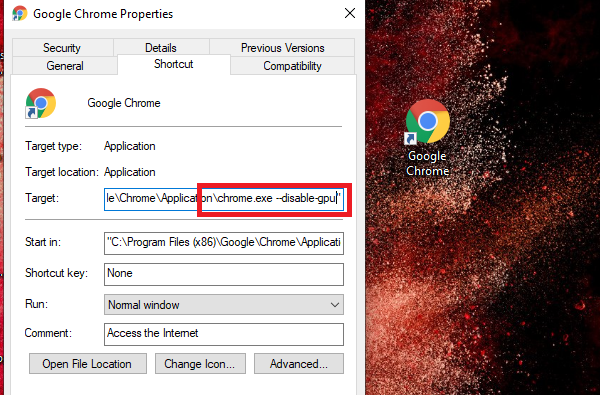Chrome Command Line Switches
Here are some Chromium Switches you can use to enable or disable features.
–disable-sync–ash-enable-night-light–allow-outdated-plugins–incognito–disable-background-mode–disable-translate–purge-memory-button–start-maximized–disable-gpu–disable-plugins–dns-prefetch-disable
1] Temporarily Disable Sync: –disable-sync If you do not want to sync everything with your connected Google account, launch Chrome with this flag. It disables syncing browser data to a Google Account. 2] Enable Night Light: –ash-enable-night-light If you need to work in a dark environment, Night light helps you to reduce eye strain. I would strongly suggest keeping a dedicated shortcut for this. 3] Allow running Outdated Plugins: –allow-outdated-plugins It’s useful when a version of the plugin is broken, and you need to keep running the older version. 4] Run Chrome in Safe or Incognito Mode: –incognito To run Chrome without any extension, add-ons, themes, and account, you can use this switch. It also makes sure nobody tracks your profile. Useful when you want to test something without your account association. 5] Disable Background Apps: –disable-background-mode Useful when you want to make sure Chrome response is faster, and none of the background apps interferes with your browsing experience. 6] Disable Google Translate: –disable-translate Whenever you visit a website in a different language, Chrome prompts if you want to translate in the default language. It is possible that you know the language, and don’t need any translation. Using this flag, you can disable the Google Translate feature. 7] Stop Chrome from hogging RAM: –purge-memory-button Chrome is known to take up a lot of RAM. If you want to stop it from hogging RAM, then enable this flag. However, this works only in the Development version of Chrome. 8] Start Chrome maximized –start-maximized If you always want Chrome to launch maximized, make sure to add this to your shortcut. Usually, Chrome remembers the last position on Desktop and the size of the Window. 9] Disable GPU acceleration –disable-gpu Sometimes when Chrome has issues playing videos, you need to disable hardware acceleration. Use this flag when launching Chrome. 10] Start with Plugins Disabled –disable-plugins While you can use incognito mode to experience Chrome without any plugin, but if you want to use only without a plugin, then the flag will come in hand. 11] Disable DNS prefetch –dns-prefetch-disable When a website loads in Chrome, the IP address is stored. So next time, when you revisit the website, the Domain name to IP resolution doesn’t happen. Chrome will use the already available IP address to fetch the website. However, IPs can change, and the website might be offering more IP address of servers, which is closer to you. 12] Restore the last session on run: –restore-last-session Sometimes chrome doesn’t open the last session in case of a crash. If that’s something which happens with you often, add this as a permanent option in the shortcut
How to run Chrome with flags?
First, make sure to exit Chrome completely. You can use Task Manager to double-check and click the primary task to make sure to close all running instances of Chrome.
Next, create a shortcut on the desktop.Next right click on it, and choose properties.At the end of your “Target:” line add the command line flags. You need to add a double dash before the flag.–disable-gpu-vsyncNow when you run Chrome, it will look like: chrome.exe –disable-gpu-vsyncWhen you launch Chrome, it will launch Chrome with that flag.
Here is a pro tip. If you do not want to keep modifying the shortcut, I would suggest you try the same from the Command Prompt or the Run prompt. It will be much easier. You can find more Chromium command line switches here.

